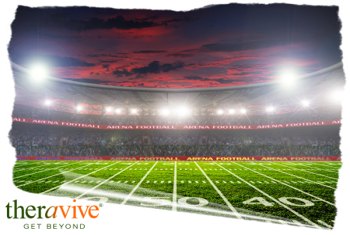December 10, 2024
by Patricia Tomasi

A new study published in the American Journal of Medicine looked at increasing trends in alcohol related mortality in the United States. “We sought to explore whether there have been increases in U.S. alcohol related mortality,” study author Alexandra Matarazzo told us. “We were hoping to find out whether there were increases and, if so, whether they are occurring at younger ages.”
[More]
June 29, 2023
by Elizabeth Pratt

Employees who have frequent interaction with artificial intelligence systems are more likely to be lonely.
Research published by the American Psychological Association found that the loneliness experienced by the employees could lead to insomnia as well as after work drinking.
[More]
December 29, 2022
by Elizabeth Pratt

35% of children injured with a firearm receive a new mental health diagnosis in the year following their injury.
Data published recently in the Anals of Surgery found that child survivors of firearm injury have high rates of new mental health diagnoses, even when compared with children who have injuries in motor vehicle accidents.
[More]
March 29, 2022
by Elizabeth Pratt

Stress in the United States is at an all time high, according to a poll conducted on behalf of the American Psychological Association (APA).
The poll showed that top sources of stress for people in the United States were an increase in prices due to inflation, issues with the supply chain, global uncertainty and Russia invading Ukraine.
[More]
January 26, 2022
by Elizabeth Pratt

For the first time since nation-wide data has been recorded, stigma towards those with depression has dropped significantly.
A study from Indiana University found that stigma associated with depression has dropped to a record low, but stigma surrounding other mental illnesses has either remained the same, or increased.
[More]
May 25, 2021
by Patricia Tomasi

A new study published in Lancet Psychiatry looked at combining behavioral harm-reduction treatment and extended-release naltrexone for people experiencing homelessness and alcohol use disorder in the United States. “We tested whether combined medication and counseling harm-reduction treatment would help people experiencing homelessness and alcohol use disorder improve on alcohol and health outcomes,” study author Susan E. Collins told us.
[More]
January 12, 2021
by Patricia Tomasi

Researchers examined 190 young adults and followed them for ten years. They were directly tested on their response to alcohol vs. placebo beverage in initial testing sessions and then they returned five and ten years later to a laboratory in Chicago to undergo identical re-examination testing. “We flew people in from all over the country (and the world!) to come back for their returning sessions,” study author Andrea King told us. “We also conducted regular follow-up interviews semi-annually in that period. I am grateful the participants were so connected to the study, as 99% of those still living continued to participate over the decade.”
[More]
It’s Friday or Saturday night. It has been a long work week and one is looking forward to the weekend. A way to relax or reward oneself for the hard work one has put in generally is associated with a drink or two of an alcoholic beverage. No harm in that. The harm comes in when one has become intoxicated from the amount of alcohol he or she has consumed that night and decides to drive home under the influence.
[More]
April 21, 2016
by Anne Kip Watson

In a few short years, how does a young man go from one the brightest futures in professional sports to potentially losing nearly everything?
Johnny Manziel, the 2012 Heisman Trophy winner, has been accused of ‘extensive damage’ during some festivities he hosted in a posh Los Angeles rental home in early April.
[More]
Neurofeedback, or qEEG neurotherapy, records the individual’s unique brainwave patterns and utilizes auditory and visual feedback to train brainwaves to a normalized pattern (Quinn, Bodenheimer-Davis, & Koch, 2004). Alcoholics and illicit substance users show similar abnormal brainwave patterns outside the range of individuals without dependence upon alcohol or illicit substances.
[More]